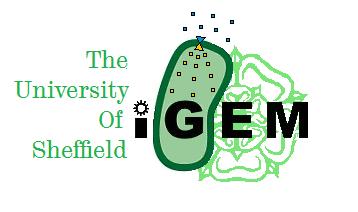Team:University of Sheffield /Project
From 2008.igem.org
| Line 2: | Line 2: | ||
<head> | <head> | ||
<style type="text/css"> <!--css=cascading style sheets --> | <style type="text/css"> <!--css=cascading style sheets --> | ||
| - | p {font-family: " | + | p {font-family: "TUOS Stephenson"} |
body {background-color: grey} | body {background-color: grey} | ||
body | body | ||
| Line 12: | Line 12: | ||
</html> | </html> | ||
| - | {| style="color: | + | {| style="color:white;background-color:Slate Blue;" cellpadding="5" cellspacing="2" border="2" bordercolor="blue" width="60%" align="center" |
!align="center"|[[Team:University_of_Sheffield |Home]] | !align="center"|[[Team:University_of_Sheffield |Home]] | ||
!align="center"|[[Team:University_of_Sheffield / Team |The Team]] | !align="center"|[[Team:University_of_Sheffield / Team |The Team]] | ||
| Line 30: | Line 30: | ||
| - | == '''Overall project''' == | + | <font size="7" color="#151B8D" face="TUOS Stephenson"><'''Overall project'''> |
| - | ====Project Overview==== | + | <font size="6" color="#151B8D" face="TUOS Blake"><u>'''Project Overview'''</u>====Project Overview==== |
| - | The aim is to engineer a biological machine that will sense microbial contamination of drinking water using quorum sensing. Quorum sensing systems use sensing proteins in the membrane (<em>[http://en.wikipedia.org/wiki/Histidine_kinase histidine-kinases] in this case</em>) to detect molecules excreted by the bacteria’s own species. After detection in the membrane, a phosphate signal is passed down pathway, causing a DNA regulatory effect. Each species also has its own corresponding quorum-producing protein. In Vibrio cholerae the sensing protein is CqsS and the quorum-producing protein CqsA | + | The aim is to engineer a biological machine that will sense microbial contamination of drinking water using quorum sensing, namely, '''''Vibrio cholerae''''', the bacterial species that causes epidemics of cholera. Quorum sensing systems use sensing proteins in the membrane (<em>[http://en.wikipedia.org/wiki/Histidine_kinase histidine-kinases] in this case</em>) to detect molecules excreted by the bacteria’s own species. After detection in the membrane, a phosphate signal is passed down pathway, causing a DNA regulatory effect. Each quorum-sensing species also has its own corresponding quorum-producing protein. In Vibrio cholerae the sensing protein is CqsS and the quorum-producing protein CqsA. |
<br> | <br> | ||
<br> | <br> | ||
<hr/> | <hr/> | ||
| - | ===If everything goes well=== | + | ===If everything goes well...=== |
| - | Our organism would initially sense Vibrio cholerae | + | Our organism would initially sense Vibrio cholerae. This will be done by hijacking a pathway already present in E.coli – the non-essential kdp pathway which is partly responsible for K+ detection and response regulation. This pathway has a similar histidine-kinase as its sensing molecule (<em>KdpD</em>) to Vibrio cholerae and Legionella, and results in a strong DNA response. The original KdpD will be knocked out of E.coli to make way for recombinant receptors. |
The recombinant receptor will be made from the sensing part of the pathogens quorum sensing protein, fused with the signaling part of KdpD. Due to the similarity of the two receptors in certain regions, this should allow quorums to be detected using the pathogens sensing mechanism, but the signal to be passed to the kdp pathway. The target genes at the end of the kdp pathway will be modified so as to express the bioluminescent, luciferase, as an indicator there are quorums (<em>and therefore pathogens</em>)present. [http://en.wikipedia.org/wiki/Luciferase Luciferase] was chosen due to its ability to be detected without expensive equipment, and the possibility of targeting proteases for its degradation if we chose to make the machine re-useable. | The recombinant receptor will be made from the sensing part of the pathogens quorum sensing protein, fused with the signaling part of KdpD. Due to the similarity of the two receptors in certain regions, this should allow quorums to be detected using the pathogens sensing mechanism, but the signal to be passed to the kdp pathway. The target genes at the end of the kdp pathway will be modified so as to express the bioluminescent, luciferase, as an indicator there are quorums (<em>and therefore pathogens</em>)present. [http://en.wikipedia.org/wiki/Luciferase Luciferase] was chosen due to its ability to be detected without expensive equipment, and the possibility of targeting proteases for its degradation if we chose to make the machine re-useable. | ||
Revision as of 10:28, 5 September 2008
| Home | The Team | The Project | Calendar of Events | Notebook |
|---|

|
| Parts submitted to the Registry |
|---|
| Modelling |
|---|
 "
"